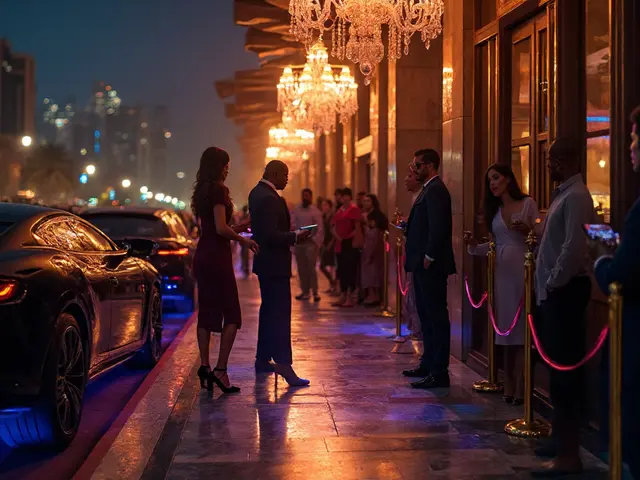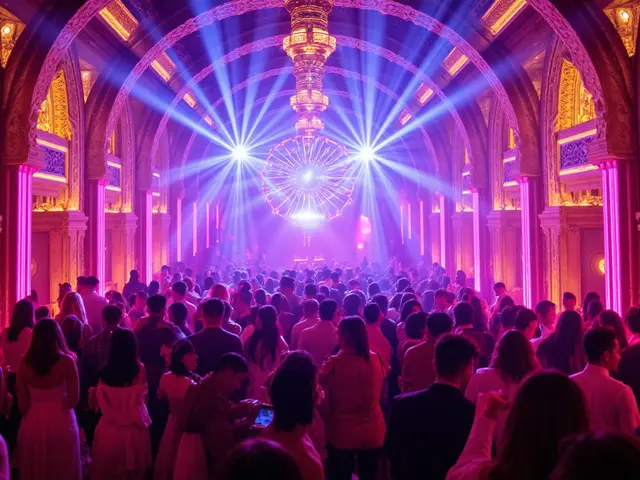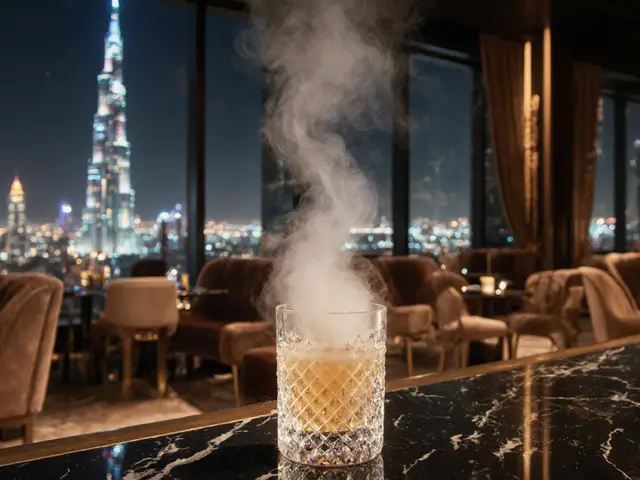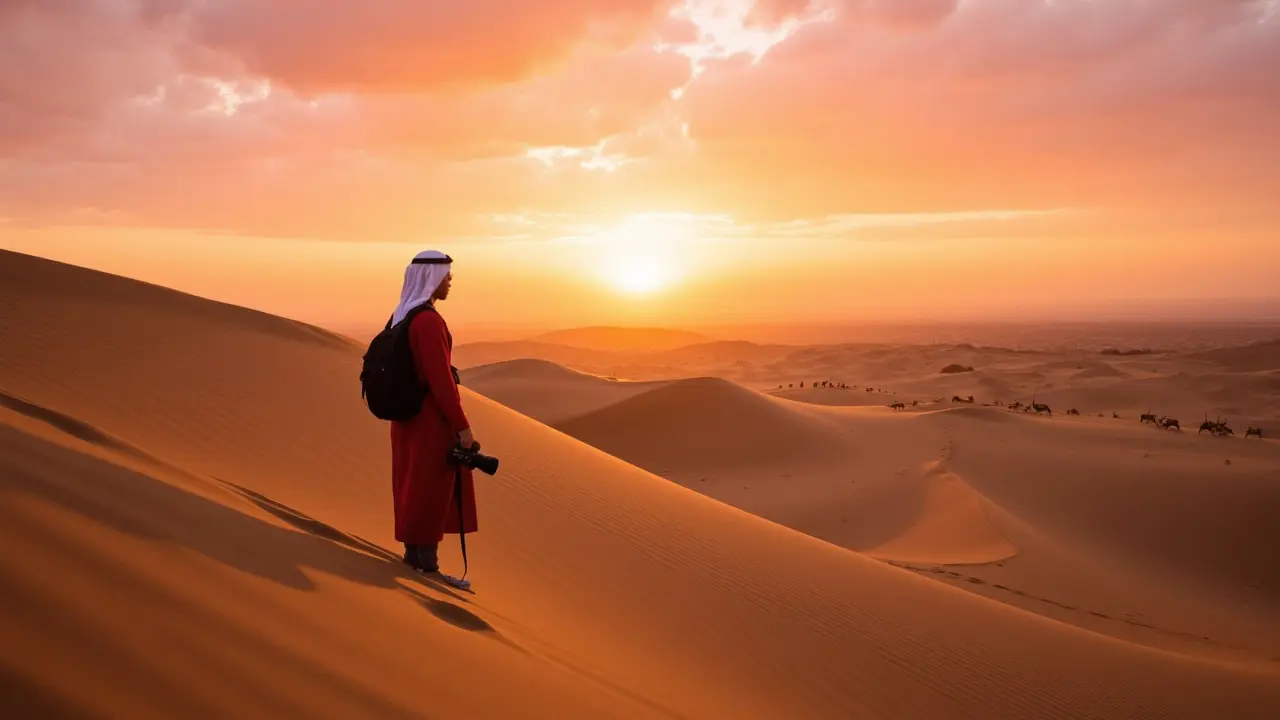
Ever wondered why people rave about the sunrise in Dubai’s desert? It’s not just the golden light—there’s something about the city’s red dunes that turns even a regular morning into pure magic. Whether you’re climbing out of a 4x4 in Al Marmoom or waiting for the sun to hit the sands outside Bab Al Shams, those moments before the city wakes up will fill your camera roll in no time.
If you want your safari photos to stand out, you’ll need more than a phone and luck. Bring a lens that handles low light, a power bank (Dubai’s heat drains batteries fast), a scarf or shemagh to keep blowing sand away, and some extra water. Don’t overpack—desert tours like Platinum Heritage or Arabian Adventures usually supply the rest, from shaded spots to cold drinks.
Most importantly, timing is everything. Skip the midday sun; Dubai’s real safari magic happens at dawn or in those rich, warm hours before sunset. Don’t forget to ask your guide about secret spots where the dunes roll endlessly or camels wander by. Locals know little tricks for catching the best light, plus they can point out where the city’s skyscrapers peek through the heat haze—not something you find in just any desert.
- The Magic of Dubai's Desert at Sunrise
- Gear Up: Essentials for Shooting and Exploring
- Golden Hours and Real Adventure
- Cultural Experiences and Nighttime Scenes
The Magic of Dubai's Desert at Sunrise
Getting up early in Dubai feels tough—until you’re standing in cool desert sand, watching the sun flip the sky from grey to orange. Sunrise out here isn’t just a pretty view. It’s the best time to see the true colors of the dunes, spot wildlife like Arabian oryx, and avoid the midday heat that can easily hit 40°C by noon in peak summer.
Drivers from popular tours like Platinum Heritage or Arabian Adventures will tell you, the calm of sunrise is when guests really get to soak in the landscape. The low sun throws huge shadows, making the red dunes at Al Marmoom Conservation Reserve look almost unreal. If you want that perfect shot for your feed, aim for the stretch between 5:30–6:00 AM when the light is soft and barely anyone else is around. According to Visit Dubai, only about 15% of desert safari bookings are for sunrise, so you’ll never feel crowded.
“There’s nothing like sunrise in Dubai’s desert—the air is fresh, and the play of shadows on the dunes is something you can’t recreate at any other time of day.” – Khaled Al Suwaidi, Platinum Heritage Chief Guide
For quick reference, here’s how the scene changes by the hour:
| Time | What to Expect | Best For |
|---|---|---|
| 5:00 AM | Deep blue sky, scattered stars | Night photography, stargazing |
| 5:30–6:00 AM | Orange glow on dunes, crisp air | Dubai desert safari photography, silhouette shots |
| 6:30–7:00 AM | Rising heat, more wildlife activity | Tracking animals, quiet camel rides |
Don’t forget your essentials: a camera with decent low-light performance, a light jacket (it actually gets chilly before dawn), and if you’re lucky, a voucher from your tour that covers a hot Arabic coffee at camp. Guides love to share morning Emirati traditions, which usually includes fresh dates and stories about the Bedouin past. And here’s a pro tip—always double-check the sunrise time for your travel date, as it can shift a good 20 minutes between winter and summer.
- Wear closed shoes: scorpions are rare but possible.
- Try out your panoramic mode—the shifting dunes really pop on wider shots.
- If you want total silence (no revving engines), book a sunrise camel trek instead of a 4x4 tour.
Sunrise in the Dubai desert isn’t just an Instagram moment. It’s a chance to see the city from a different side—one that traces back long before the glass towers and traffic. Anyone can snap sand at noon, but only a few catch that magic morning calm.
Gear Up: Essentials for Shooting and Exploring
You’ll notice pretty fast that packing light but smart is the real trick on a Dubai desert safari. The sand, the sun, and those sudden gusts hit way different out here compared to a walk in Downtown Dubai. Most locals and serious safari guides swear by three things: protection (for yourself and your gear), battery life, and not missing that "wow" shot just because your hands are full.
Start with the basics: a light DSLR or mirrorless camera works best, especially something that can switch between wide and zoom lenses. The Canon EOS 90D and Sony A7C are two popular choices. Add a polarizing filter to deal with crazy bright sunlight and reflective sand. Tripods work but only bring a small, travel one—nothing’s worse than lugging gear up a hot dune.
If you’re into drone shots, check the rules: Dubai enforces strict drone regulations, and flying without a permit gets your gear confiscated and a fine. For ground shots, GoPros with sandproof cases give you action clips that phones just can’t match.
- Protect your gear: Ziplock bags and lens cloths are a must. Fine sand gets everywhere, and the salt from sweat goes straight onto anything you touch.
- Power up: Portable chargers are lifesavers. Even with a new battery, desert heat saps power fast — expect up to 30% quicker drain by midday.
- Comfort: The right shoes and a hat with a proper brim will save your skin. Sandals fill with grit, so sneakers are smarter. Wear a shemagh or scarf for wind and sun protection.
"I always tell people: cover your camera, keep lenses capped, and never forget to hydrate," says Ahmed Jaber, lead safari guide for Platinum Heritage Dubai. "It’s easy to focus on the pictures, but gear can’t help if you’re not feeling good yourself."
Water and shade are not optional. Every reputable operator carries chilled bottled water and can point out shaded rest stops, especially in summer months where temperatures can top 44°C (that’s 111°F for expats from the US and Canada).
| Item | Why It Matters on Safari |
|---|---|
| Camera with changeable lens | Wide angles for the dunes, zoom for wildlife and city views |
| Polarizing filter | Cuts glare and boosts sky color, reduces harsh contrast |
| Portable charger | Phones and cameras drain 30% quicker in the heat |
| Shemagh/scarf | Shields face from sun, sand, and wind |
| Reusable water bottle | Stay hydrated; refill at camp stops |
Pack only what you’ll carry up a dune. Most tour vehicles—think Toyota Land Cruisers and Nissan Patrols—have basic storage, but not for big bags. Stick to what fits in your daypack, and you'll enjoy the experience instead of wrestling gear every five minutes. Remember, the less fuss with your equipment, the more you’re watching Dubai’s desert come alive in front of your eyes.
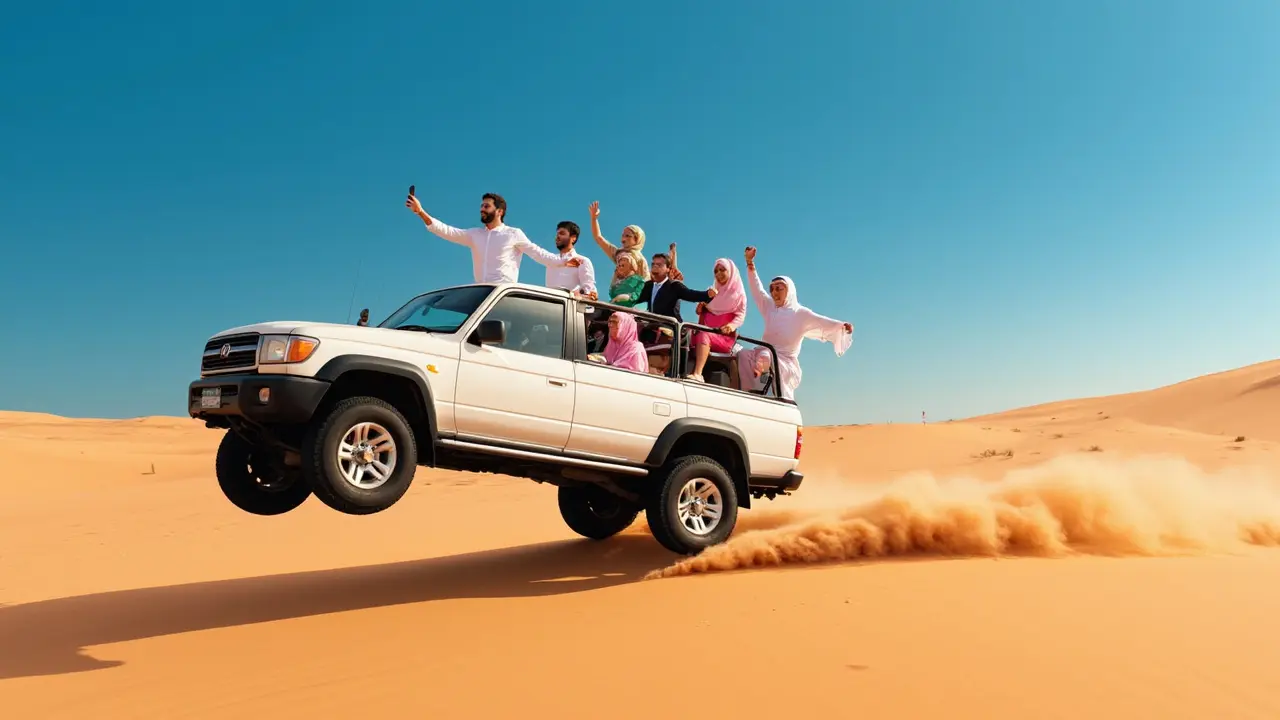
Golden Hours and Real Adventure
If you’re aiming for the most scroll-stopping shots, nothing beats the golden hours in the Dubai desert. That’s the hour just after sunrise and right before sunset—when the light is soft, shadows are long, and the dunes actually look like someone turned up the saturation. Guides swear by these windows, and for good reason: This is when you get those classic “endless red sands” photos, minus the squinting and harsh glare.
Dune bashing is one of the real highlights. It’s not just a wild ride with a professional driver—this is where adventure and photography collide. The best time to hit the dunes? Around 4:30 pm in winter months (November to March), when the light cools down and the sand glows. Some operators, like Dubai desert safari specialists Arabian Adventures, even offer sundowner trips so you’re catching both adrenaline and the perfect shot.
Here’s a breakdown of some peak activity times (quick snapshot):
| Activity | Best Time | Extra Tips |
|---|---|---|
| Dune Bashing | Late afternoon (4:30 – 6:00 pm) | Wear your seatbelt, keep your camera strap on |
| Camel Trekking | Sunrise or pre-sunset | Pack a light jacket (it gets chilly in winter) |
| Sandboarding | Early morning or just before sunset | Use sunscreen, the sand reflects a lot of sun |
And here are a few practical tips to get your golden hour safari right:
- Always check sunset and sunrise times—Dubai varies a lot by season. Summer sunsets can be past 7 pm, while winter evenings kick in earlier.
- Wide-angle lenses let you catch more sand and sky, but a zoom can snag that lonely oryx in the distance.
- Don’t rush! Tour companies like Platinum Heritage build in time for stops, so you can shoot, explore, and chill between activities (and not feel like you’re on a theme park ride).
The rush of adventure—whether sandboarding or bouncing through bowls—feels even better with that soft, low sunshine. Set your camera to burst mode as the jeep crests a dune, or grab those action shots of friends flying down sandy slopes. Trust me, photos from Dubai’s golden hours always get the most reactions.
Cultural Experiences and Nighttime Scenes
Once the sun sets, Dubai’s desert comes alive with a whole new vibe. Most desert safaris don’t just leave you at the dunes—they zip you back to camp, often set up to echo a traditional Bedouin village. If you want to shoot or just soak in authentic UAE life, stick around after dark. The best camps usually belong to companies like Platinum Heritage or Arabian Adventures and are set up away from city lights for that pure desert night feel.
At most camps, you’ll find local Emirati cuisine—think lamb ouzi, grilled kebabs, and sweet luqaimat. Try a cup of gahwa (Arabic coffee) and dates, a staple welcome gesture in Emirati homes. Some dinners come with live cooking stations and shisha lounges, so there’s lots to capture whether you’re snapping wide shots or tight food closeups.
The cultural shows aren’t for tourists only—locals join sometimes too. Tanoura dance (that dizzying, spinning skirt performance), oud music, and sometimes falconry displays make for both fun photos and a chance to see real UAE traditions in action. If you’re into portraits, ask permission first and catch performers during the breaks—most are happy to pose if you’re respectful.
- Dubai desert safari camps often offer short camel rides in the evening for that true desert vibe. The lighting is softer and more forgiving for photos.
- Don’t skip henna painting—most camps have experienced artists who can walk you through classic designs. Henna looks especially cool under lantern light, popping in nighttime photos.
- Try your hand at sandboarding, if you’ve got energy left; the sunset sky is perfect for action shots.
Nighttime is also the best shot at desert stargazing. Dubai’s clear seasons run November to April, so plan for these months to avoid heat haze and dust. Here’s how the experience stacks up, on average, across several top Dubai safari providers:
| Experience | Included in Most Safaris | Best Time |
|---|---|---|
| Tanoura & Belly Dance | Yes | After dinner (7-9 PM) |
| Traditional BBQ Dinner | Yes | 6-8 PM |
| Stargazing | Sometimes | After 9 PM |
| Shisha Lounge | Yes | Anytime after dark |
| Henna Art | Yes | Early evening (5-8 PM) |
One last tip: take a minute to look up from your camera. Night in Dubai’s desert is quieter than you’d expect. Whether you’re there for the photos, the food, or just want a break from city buzz, these after-dark moments are just as real as anything you’ll find in a guidebook.

